The Ultimate Guide on How to Fix Elementor Server Error 500? [7 Simple Methods]
I've been fixing Elementor sites that showed the scary “Elementor Server Error 500” message since 2021 & it happens on small blogs, big stores, and even client sites I look after every week.
So, in this straightforward guide, I’ll show easy, step-by-step ways to find the cause and fix it fast. And being honest, these are the same fixes I use for paying clients and that follow the official WordPress and Elementor help docs (common for all of my Elementor Tutorials)
I’ve added screenshots, clear steps, and notes so you can check each fix yourself & all steps were tested in August 2025 on the latest Elementor version.
Here's What you’ll get:
- 7 easy fixes for the “Server Error 500” problem — tested on real sites.
- Clear steps + screenshots so you can follow along without guessing.
Real Quick: What is the 500 Internal Server Error?
The 500 Internal Server Error is a general error message that indicates something went wrong on the server, but the server can’t be more specific about the exact problem.
In Elementor, this usually happens due to
→ overloaded databases,
→ plugin conflicts,
→ or server resource limits.
Worth Sharing: Mozilla has a detailed guide on HTTP response status codes that will help you understand these technical terms better.
Step-by-Step Guide to Fixing the 500 Internal Server Error
1. Optimize Your Database
A cluttered or overloaded database is often the culprit behind the 500 error. Optimizing your database can free up resources and solve the problem.
- Use WP-Optimize Plugin:
Install and activate WP-Optimize from the WordPress plugin repository.
Go to WP-Optimize > Database and click Run all selected optimizations.
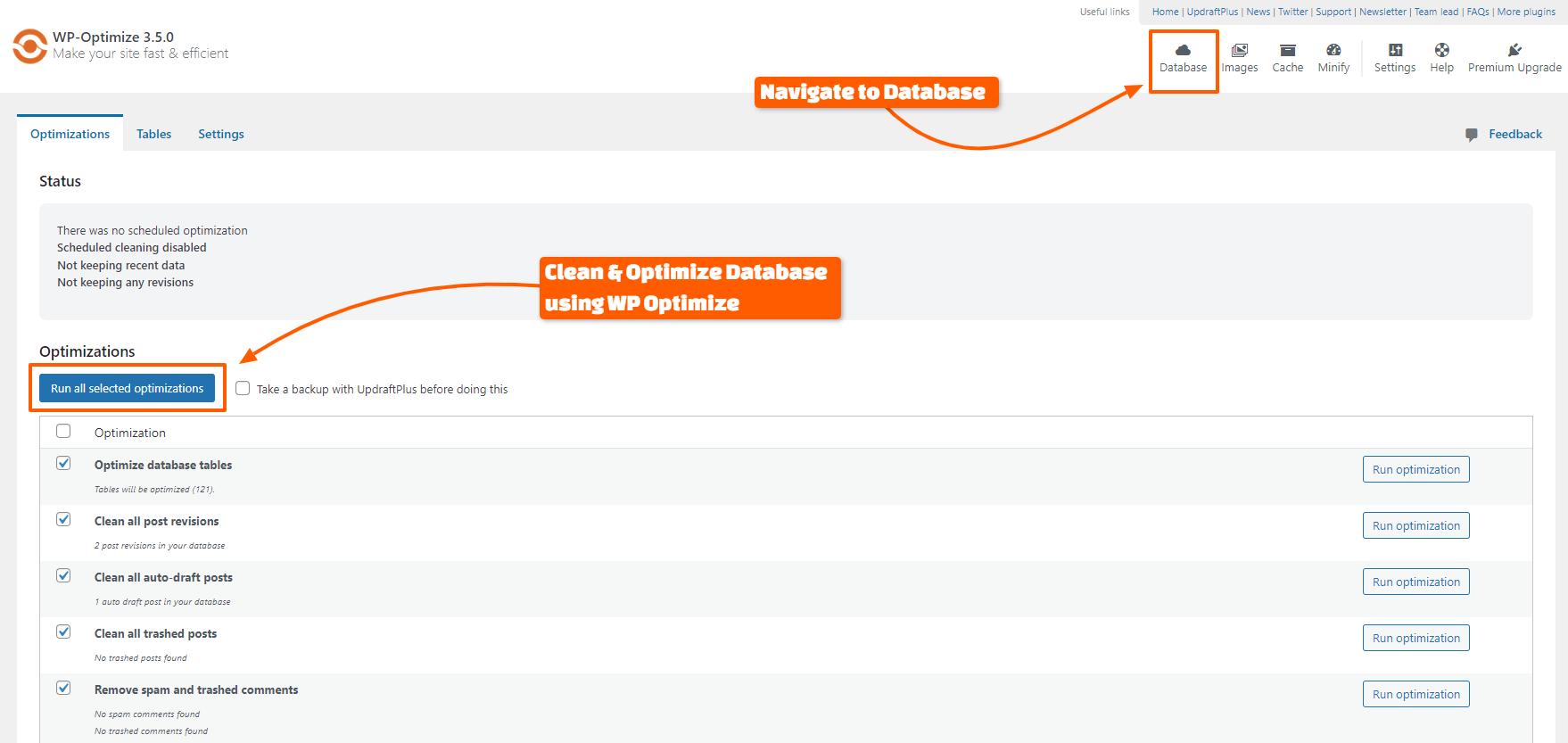
- Automate Optimization with FlyingPress:
- If you’re not yet using FlyingPress or a similar caching plugin, that can automate database optimizations, you’re making extra efforts.
I strongly recommend FlyingPress as the #1 Speed Optimization Plugin for WordPress & Elementor Sites. Click here to get it at a 30% renewal discount.
- Go to FlyingPress > Database and enable automated cleanups.
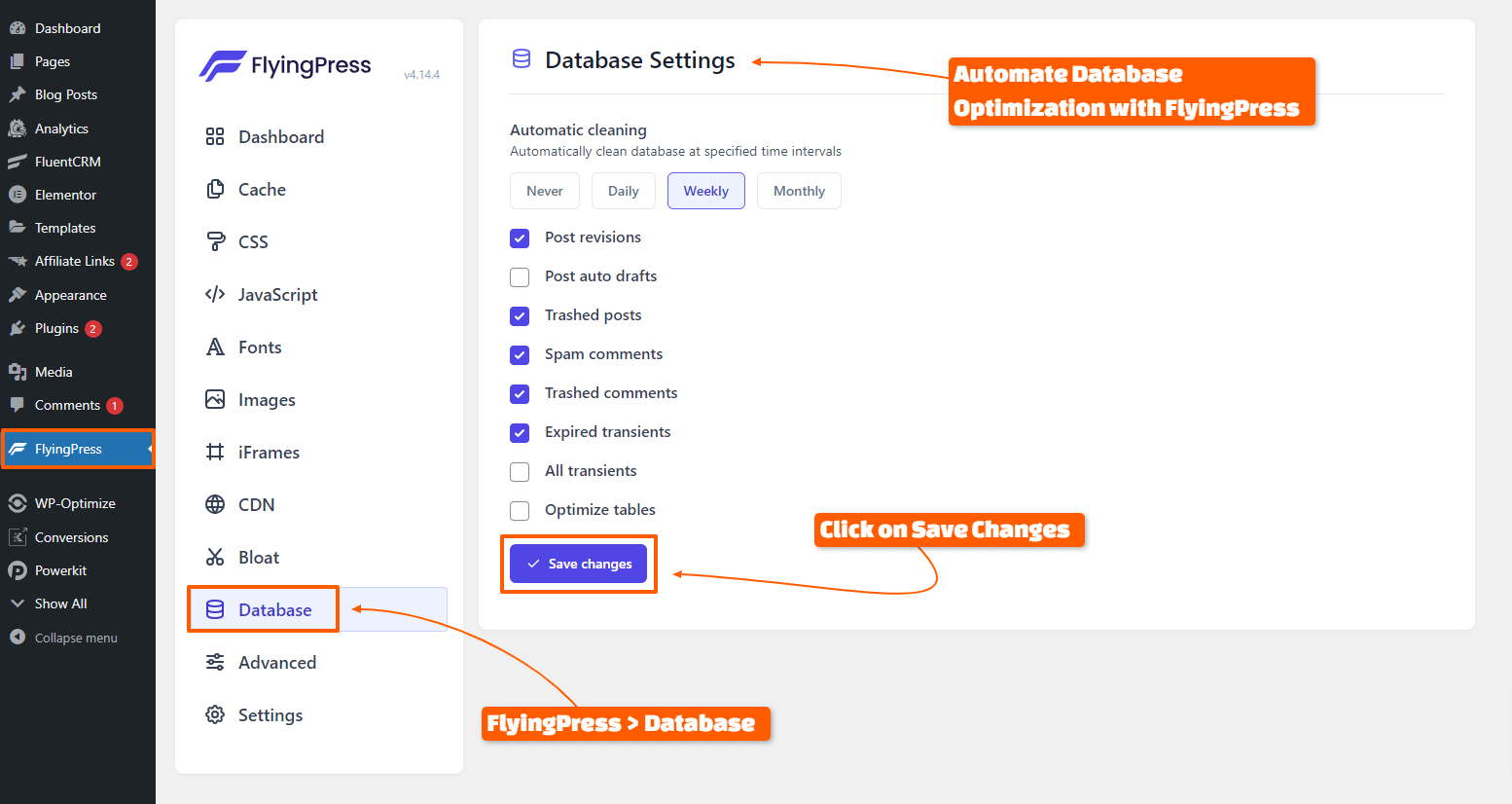
Also Read: Fix Elementor Update Breaks Site!
I've shown 5-7 fixes that you can apply & fix your site in under 10 minutes.
2. Increase PHP Memory Limit
Sometimes, the 500 error happens because your site doesn’t have enough memory to work properly. Here’s how to increase it:
- Edit wp-config.php File:
- Access your site’s files using an FTP client or your hosting provider’s file manager. (Hosting services like Hostinger provides an easy-to-use File Manager)

- Find the wp-config.php file in the root directory.
- Add the following line before the “That's all, stop editing!” line:
define('WP_MEMORY_LIMIT', '256M');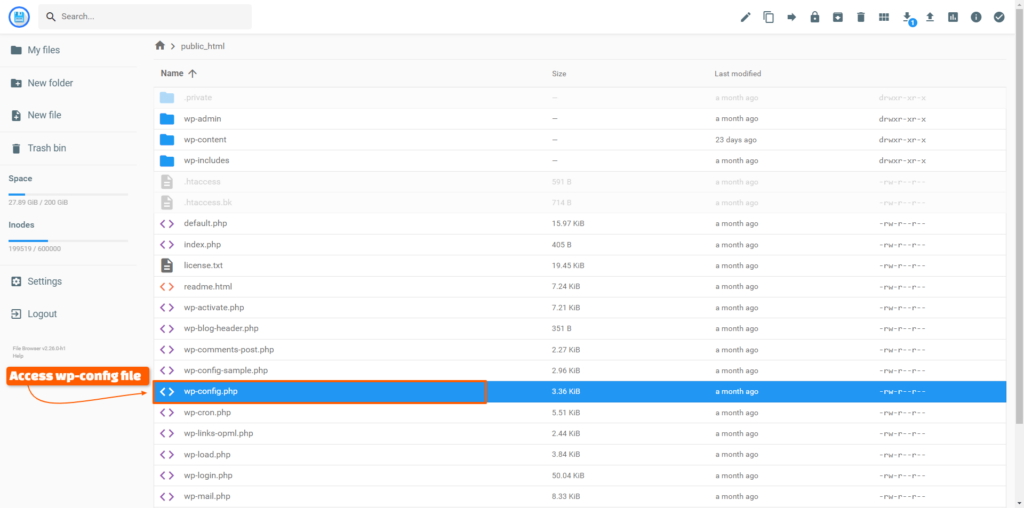
3. Check for Plugin Conflicts
Sometimes, plugins don’t play nice with each other, causing conflicts that lead to the 500 error. Here’s how to check:
- Deactivate Plugins:
- Go to Plugins > Installed Plugins and deactivate all plugins individually to see if the error is resolved. (I said all that doesn’t mean you’ll deactivate Elementor too)
- Reactivate Plugins One by One:
- Start reactivating your plugins one at a time.
- After activating each plugin, check your site to see if the error reappears.
4. Check Your .htaccess File
The .htaccess file controls many aspects of your server, and if it’s corrupted, it can cause a 500 error.
- Restore Default .htaccess:
- Go to your site’s root directory and locate the .htaccess file.
- Rename it to .htaccess_old to deactivate it.
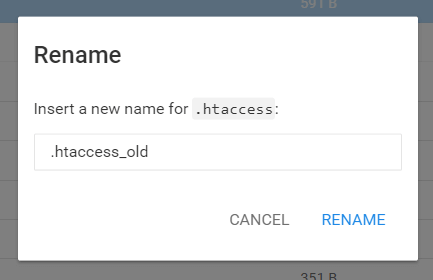
- Go to Settings > Permalinks in your WordPress dashboard and click Save Changes to generate a new .htaccess file.
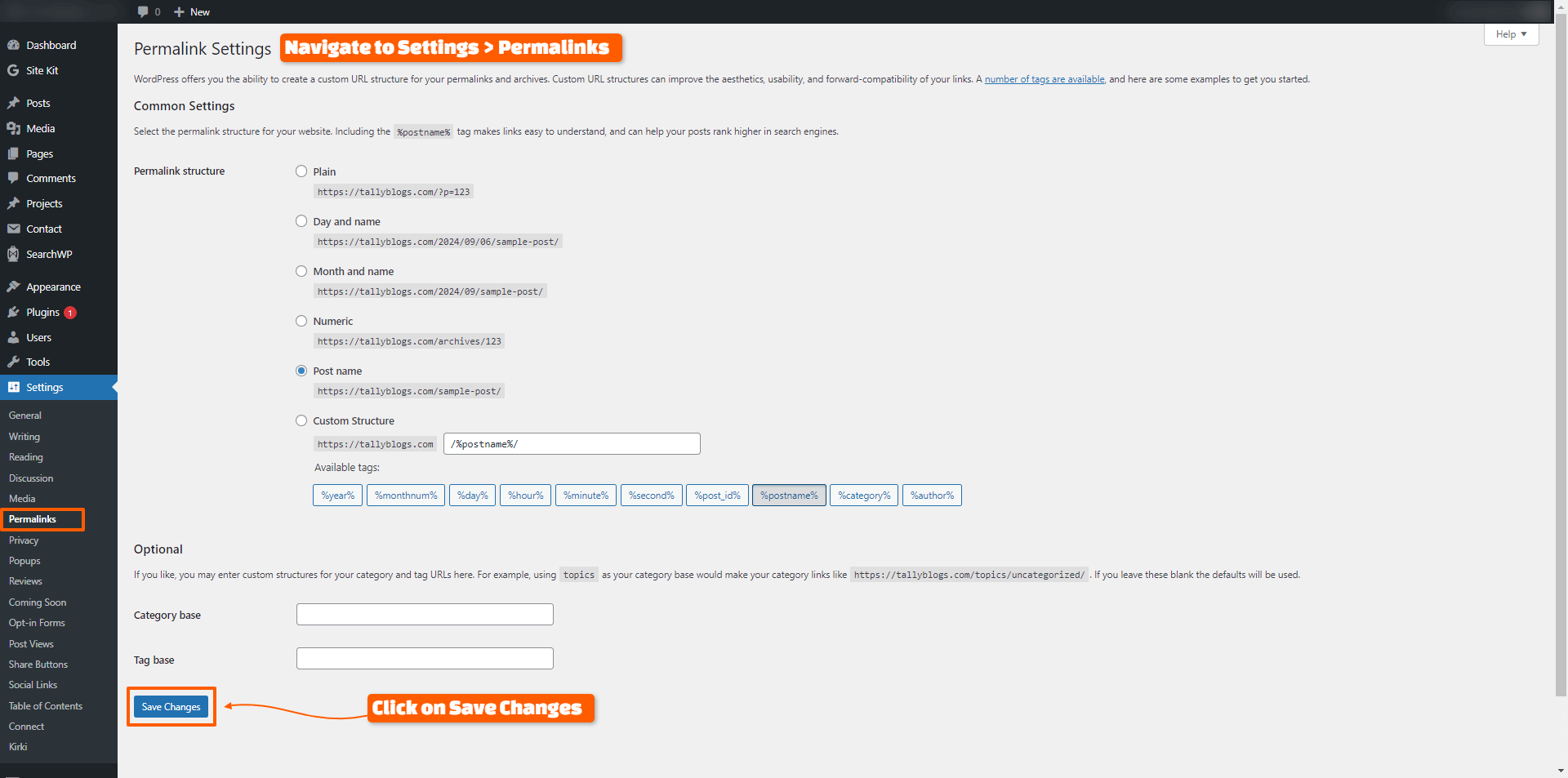
5. Switch to a Default Theme
If the error persists, your theme might be the issue.
- Switch to a Default WordPress Theme:
- Go to Appearance > Themes and activate a default theme like Twenty Twenty-Three.
- Check if the error is resolved.
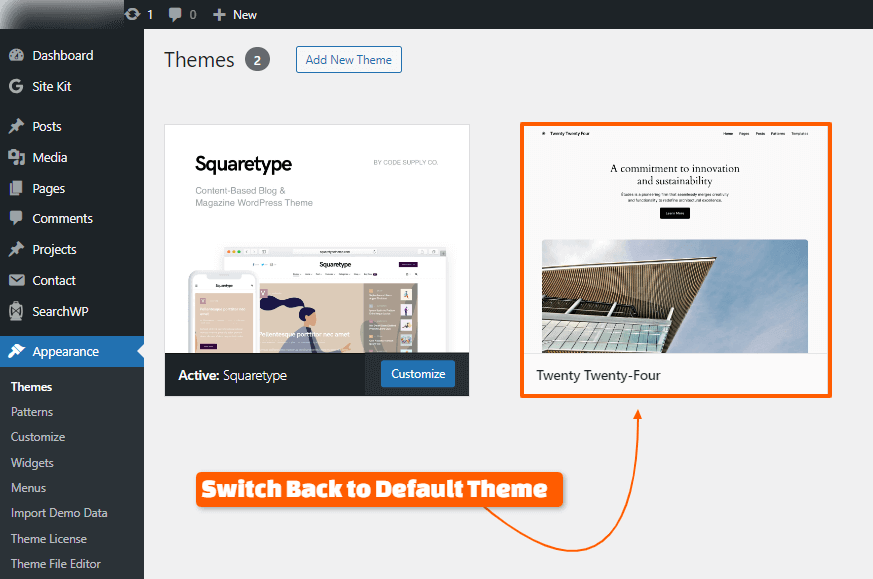
6. Enable Debugging Mode
If you’re still having trouble, enabling debugging mode can help you pinpoint the issue.
- Enable Debugging in wp-config.php:
- Open your wp-config.php file.
- Find the line that says define(‘WP_DEBUG', false); and change it to:
define('WP_DEBUG', true);
define('WP_DEBUG_LOG', true);
define('WP_DEBUG_DISPLAY', false);This will log errors to a debug.log file in your wp-content directory.
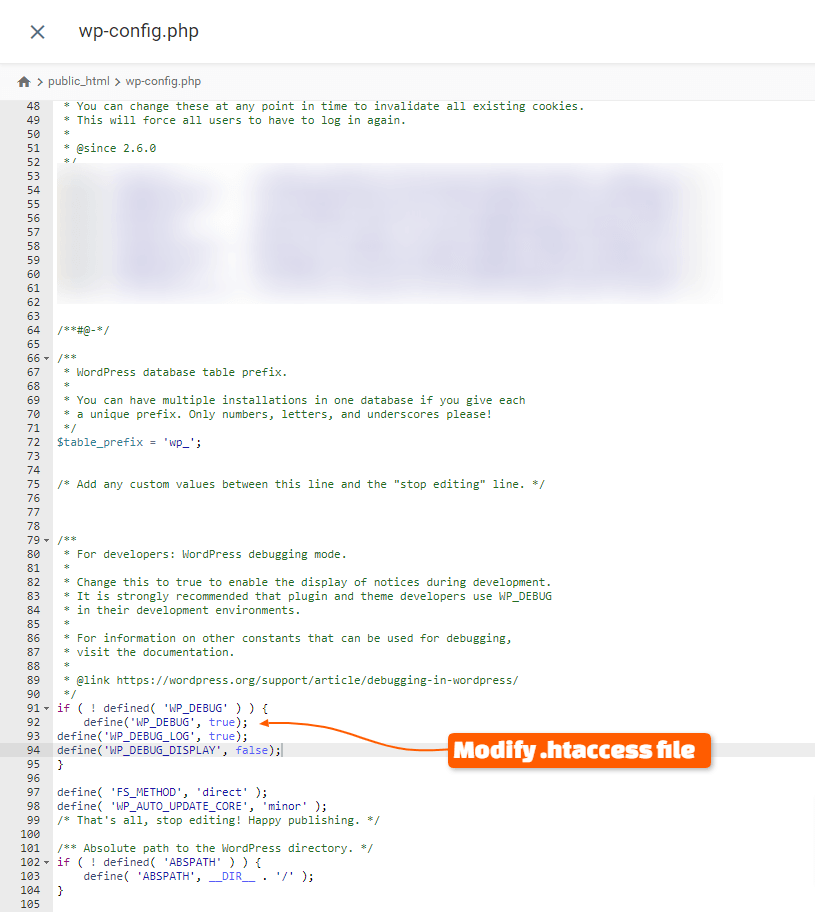
7. Contact Your Hosting Provider
If none of the above solutions work, it might be an issue with your server.
- Reach Out for Support:
- Contact your hosting provider’s support team and provide them with details about the issue.
- They may be able to identify server-related issues or provide additional resources.
Quick Note: If you’ve got an Elementor Site, don’t go cheap on your Hosting, Invest in a solid & reliable hosting provider. I use & recommend Hostinger for beginner sites & Cloudways for more complex sites where business matters to you.
How to Prevent Future 500 Errors in Elementor?
You don’t want to fix the same issue again & again whether it’s your site or your relationship. So, here’s how you can avoid running into the 500 error again:
- Regularly Optimize Your Database: Use plugins like FlyingPress to keep your database clean & optimized (The plugin provides daily, weekly & monthly automated database optimization)
- Keep Plugins and Themes Updated: Always update your plugins, themes, and WordPress core to avoid compatibility issues.
- Monitor Server Resources: Keep an eye on your hosting plan’s resources, declutter & keep the only required stuff, and upgrade if necessary to handle your Elementor site’s needs.
Also Read: How to Reset Elementor Settings (Without Losing Everything)
Now that I’ve provided you with precautions, let me quickly answer some of the frequently asked questions…
FAQs | Elementor Server Error 500
1) What is the most common cause of the 500 Internal Server Error in Elementor?
The most common cause is an overloaded database, often due to outdated or conflicting plugins.
2) Can the 500 error affect my website’s SEO?
Yes, if your site is down frequently due to this error, it can negatively impact your SEO rankings.
3) Is it safe to increase the PHP memory limit on my own?
Yes, increasing the PHP memory limit is generally safe and can often resolve the 500 error without any negative side effects.
4) What if I can’t access my WordPress dashboard due to the 500 error?
If you can’t access the dashboard, try disabling plugins via FTP or your hosting control panel, and then follow the steps outlined above.
5) How often should I optimize my database?
It’s a good practice to optimize your database at least once a month, especially if you’re regularly updating content or installing new plugins.
Wrapping It Up
Fixing the Elementor Server Error 500 doesn’t have to be stressful.
By following the 7 steps & methods outlined in this guide,
you should be able to resolve the issue yourself.
Remember: Keeping your site optimized and up-to-date is the key to avoiding this error in the future.
If you ever get stuck, feel free to get in touch – I provide range of services related to Elementor & beyond.
Cheers,
Kuldeep Rathore

About the Author
Kuldeep Rathore is a WordPress & Elementor expert and co-founder of 60Pixel. With 3+ years of hands-on experience, he builds fast, SEO-optimized websites for creators and small businesses. Through this blog, he shares practical tutorials and tips trusted by the WordPress community worldwide.


